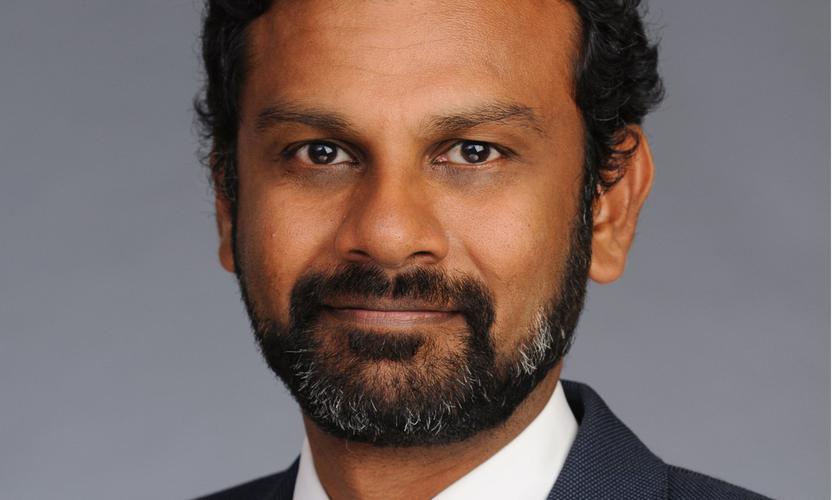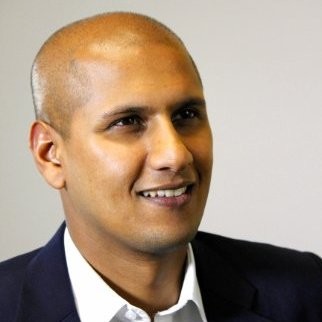Twenty years is enough time for innovations to become widely adopted but not quite long enough to render the world unrecognisable. Real estate generally has a long life span, stretching into decades or even longer, so changes to the landscape are relatively slow. However, there are trends in motion set to alter the shape of what our towns and cities will look like in the future.
While we think the skylines of London, New York and Shanghai will remain their distinctive selves in the next two decades, if we look under the canopy, themes are playing out that will affect how we all live, work and play. We unpick five key themes - sustainability, autonomous vehicles, intergenerational living, mixed-use schemes and smart cities - and gaze into the future to imagine how they will influence the real estate industry in 2039.
Sustainability

Source: Fidelity International, May 2019
In 2039, we would be 10 years on from the Paris agreement target of a 40 per cent reduction in greenhouse emissions (from 1990 levels) and just over 10 years away from the EU’s target for a climate neutral Europe by 2050. Real estate developers would already be experienced in building ‘net-zero’ properties where the total energy used by the building in a year is equal to the amount of renewable energy created on site. The challenge would be to retrofit existing buildings so they can also be net-zero. New technologies will be essential in overcoming that challenge.
Advanced materials will be able to harvest energy on different surfaces in the building. Glass photo-voltaic panels, effectively solar windows, will replace normal windows and collect the sun’s energy while being transparent. Grey water energy recovery will reuse heat from drain water from dishwaters, bathrooms and washing machines. Piezoelectric materials (literally meaning ‘electricity resulting from pressure’) will accumulate a charge from mechanical stimulation, such as footsteps, which can be converted to a power source.
Integrating innovative energy technologies could enable us to progress beyond net-zero to energy surplus buildings. This surplus could then be transferred into smart electricity grids and sold. Companies may even donate excess power to social enterprises such as schools and hospitals by using blockchain as part of their corporate social responsibility programmes.
Autonomous vehicles

Source: Fidelity International, May 2019
Transport is on the cusp of being transformed by autonomous vehicles. But, while the technology is nearly there for safe autonomous driving, the infrastructure needed to support is still catching up. In 20 years’ time, that should change.
Many governments have set ambitious targets for electric vehicle usage but have not set targets for charging stations. Patchwork solutions around fitting chargers outside homes or even linking cables from inside houses to outside vehicles are impractical. But it may not be necessary to fill crowded areas with chargers. Given that urban space is becoming increasingly scarce, people may drift away from car ownership altogether, opting to hire vehicles on a journey-by-journey basis and limiting the need for high concentrations of chargers.
Driverless taxis could be charged overnight in less dense locations outside cities and towns, and drive themselves into urban areas in the morning, ready to meet customer demand. Charging stations must be located fairly close to urban areas so vehicles don’t use up significant amounts of energy in empty travelling, but they do not need to be outside every home or in every postcode, releasing space in built up areas.
If driverless taxis are used efficiently, there’s less room needed on streets for parking and, as traffic becomes organised, roads may be less congested. This could allow street designers to shift to pedestrian-centric models and incorporate more room for cycle lanes.
Autonomous vehicles could also influence the locations of warehouses. With no driver to worry about, companies are freed from driver rest breaks and holidays. That means warehouses could be situated in far flung areas, relieving the pressure to be within a certain distance of urban areas.
Intergenerational living

Source: Fidelity International, May 2019
The world is ageing, and the real estate industry will have to think about how to cater for changing demographics. One way is to design and curate residential property to serve the full range of life stages. Developers could combine the stages under one roof to create side-by-side living between multiple generations. Properties could be built which facilitate a close but independent relationship between different generations allowing for mutual support and benefit. For example, a retired couple could assist a young family with childcare while the parents work in return for help with grocery shopping or cooking.
These inter-generational ‘family units’ do not necessarily have to be related. It can include anyone willing to benefit from such arrangements, perhaps introduced to each other by specially created apps. It can also include groups of generations supporting each other in a community and sharing skills. For example, a musician could provide music lessons in exchange for an original piece of furniture crafted by a carpenter. In some ways this is harking back to a sense of the pre-industrial village community, where combined talents allowed the group to be, in many ways, self-sufficient.
Intergenerational living provides strong social benefits by delivering support and independence to different members of society and it relieves the strain on government care services. If intergenerational communities do take off, demand for retirement villages could suffer. Despite increasing numbers of retirees, retirement villages are expensive, create homogenous communities and remove the satisfaction of contributing to society. Instead of ‘ghettoising’ the elderly, intergenerational living embraces them.
Mixed-use schemes

Source: Fidelity International, May 2019
Urbanisation is a powerful long-term trend which has created competing demands for living, working and leisure space in major cities across the world. The response from real estate planners could be to develop areas which creatively use space to make the most from the land. Mixed-use buildings, which combine residential, commercial and social functions, could help maximise that space.
Congested cities, flexible working arrangements, sophisticated communication tools and the blurring between work and leisure mean that people are changing their daily behaviours. Mixed-use facilities can complement those behaviours, enabling people to work where they live and socialise on their doorstep.
People are, at heart, social creatures, and gathering at these multipurpose locations feeds the desire to ‘live-work-play’ together. In response, real estate developers may move to more hospitality-type business models. That means ensuring tenants have flexible space in their buildings, which offer work stations, meeting rooms, wellness centres, child care, event space and living quarters, all under one roof.
Corporations will also have to think about how they use real estate. With more of their employees choosing to work from different locations, the need to own or lease offices becomes increasingly redundant. Instead, companies could partner with landlords and flexible space operators to provide employees with a wide range of places and set-ups in which to work.
Smart cities

Source: Fidelity International, May 2019
In the next 20 years we could see existing technologies such as the internet of things (IoT) and 3D printing fully integrated into our cities. IoT technologies are already used in homes and offices but the principle can be deployed across whole cities, transforming and improving the lives of city dwellers. By creating networks of connected devices, objects can exchange data and self-adjust how they operate.
City lighting, parking, traffic control, waste management, power and water supply, crime detection, schools, libraries and hospitals can all be managed through data-driven decisions so that assets are used more efficiently. For example, visual sensors could detect a street crime taking place, alert security services, which speedily make their way through busy roads which have already been cleared by traffic lights - all by powered by automatically connected data.
For smart cities to work, connectivity is essential. Thousands or even millions of IoT devices will need to have robust connections to exchange massive amounts of data every minute. Digital infrastructure to support this will almost certainly have to be ubiquitous, integrated into everything from lampposts to buildings. Some of that technology can be subtly built into objects such as bins, which will automatically send a signal when the bin is full. For more durable landmarks such as bridges, sensors will have to be strategically attached so bridges can communicate with traffic control and security services.
The way we shop could also be transformed in smart cities. When we walk past a retailer, two-way data connections could advertise and market to us individually through visual displays and voice messages using data shared from our smart phones.
The experience within a shop could change as well. Customised items could be quickly created using 3D printers to make trainers in unusual colours, jeans with tailored measurements and vases of a certain style. There’s a recyclable element here as well. Customers could use existing items they own as the raw material for new items. For example, an old tie could be converted into a new design using the 3D printer, or perhaps even transformed into a pair of socks.
Conclusion
It’s entirely possible that the future will not turn out quite how we expect. In fact, it’s very likely given we are looking two decades ahead. But it’s useful to imagine how things will change so we can identify the full range of possibilities and map uncertainty in a world where our actions today influence what happens in the future. By peering forward 20 years, we can be reasonably confident that the trends we are observing today will have made substantial impacts. Combining those trends with timeless principles helps us predict how the world will change.
One of our core beliefs is that humans are social creatures and the personal touch will remain central to daily life. Intergenerational living and mixed-use schemes are solutions to problems we see based on our social nature. The power of data and technology is another conviction, which will play out most strongly through autonomous driving and smart cities. Sustainability is crucial to how we envisage the future. It’s been embraced by governments and organisations throughout the world and we believe the real estate industry has an important role to play in finding solutions to climate change.
Finally, location will remain a dominant theme through all the trends we see. It’s an old adage that the three most important factors in property are ‘location, location, location’. It’s been true for as long as we can remember, and we can’t see that changing. Technological breakthroughs will affect how we use buildings and interact with each other, and could loosen the influence of location to some degree. But in the next 20 years, location will continue to be a key consideration, whether that’s how far autonomous vehicle charging stations can be from urban areas, where net-zero commercial enterprises can be positioned while still being connected to the smart grid, where people congregate for intergenerational living solutions or in mixed-use schemes, or smart cities, which are really just our current habitats brought into a digitised and connected world.
In some ways, the future of real estate won’t be so different from the past. Convenient and well-located space has always been at a premium and will continue to be so. In other ways, trends are in place that will shake up the industry. And, just as the smart phone replaced the home phone, our cities and buildings will gradually be replaced by smart cities and other innovations. While its core functions will stay the same, the way they look and work may well be different in 20 years.








































